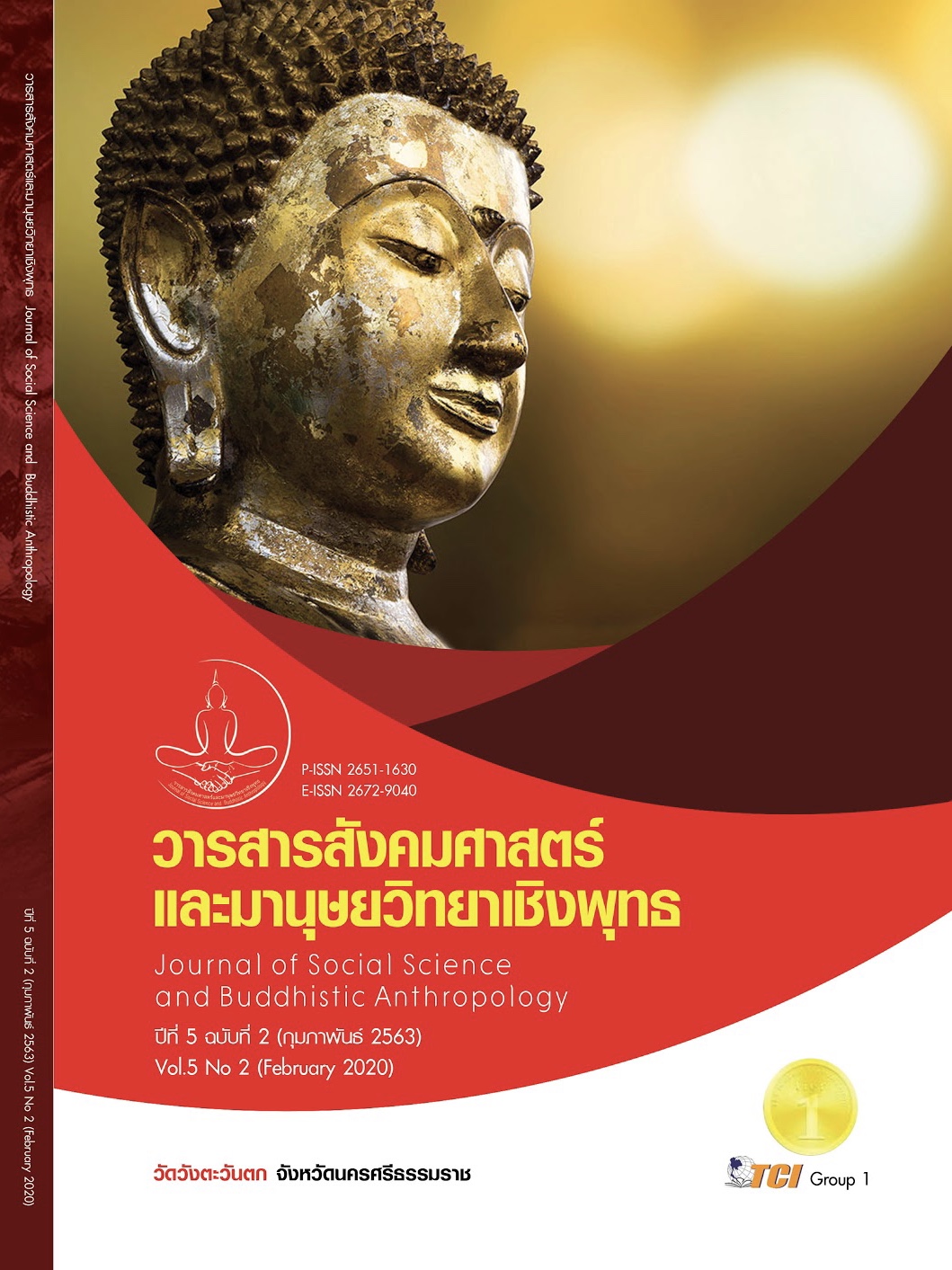A STUDY OF THE MERIT VALUE TO CREATE A BUDDHIST MORAL LEARNING PROCESS IN THE NORTHEAST
Keywords:
Baisema, Buddhist Ethics, The Northeastern, Learning ProcessAbstract
This article has a purpose. 1) to study the value and Buddhist ethics appcar in Buddhist in the north eastern 2) To Analye the learning patterns of Bacchus in the northeast. 3) To develope a model of learning Buddhist ethics which is in Buddhist in the Northeastern.
The result of research found that: 1) Values, importance, and Buddhist ethics in the northeastern battlements It can be seen that the stone form of Bai Sema is linked to the principles of life. And local beliefs Along with the teaching style in doing goodness through the stone principles And the images that appear in the rock formations at different locations in the northeast 2) Learning style from Bai Sema in the northeast Is a study of respect for various religions with a variety of rituals And teaching methods of the ancient people who wish to express The knowledge of the principles, teachings that have been in that era and the value that must be followed with respect. In the concrete and abstract aspects that appear in the Hin Sema 3) From the study of Bai Sema that appears in different sources in the northeast To create a process for developing the learning model of Buddhist ethics that appears in the Bai Sema in the northeast Therefore, the value of important Buddhist principles that appear in the stone leaves in the northeastern region Therefore can be considered as a demonstration of Buddhist ethics That must be conserved and developed to be a learning resource on ethics And then developed to be a form of education in concrete And abstracts to pass on knowledge to the young generation in the next order
References
กรมศิลปากร. (2529). จารึกห้วยมะอึก ในจารึกในประเทศไทยเล่ม 1. กรุงเทพมหานคร: กรมศิลปากร.
จีรพันธ์ สมประสงค์. (2533). ประวัติศิลปะ. กรุงเทพมหานคร: โอ.เอส.พรินติ้ง เฮ้าส์.
ชินณวุฒิ วิลยาลัย และคณะ. (2552). องค์ความรู้เรื่องใบเสมาอีสาน เล่มที่ 2 . กรุงเทพมหานคร: สำนักศิลปากรที่ 9-12 .
ดนุพล ไชยสินธุ์ และรำเพย ไชยสินธุ์. (2529). ใบเสมาหินวัดพัทธสีมารามหลักฐานทางโบราณคดีที่สำคัญของเมืองเลย. ใน เอกสารเผยแพร่ของศูนย์วัฒนธรรม จังหวัดเลย. ศูนย์วัฒนธรรม จังหวัดเลย.
ดนุพล ไชยสินธุ์ และรำเพย ไชยสินธุ์. (2533). จารึกจังหวัดเลย. เลย: รุ่งแสงธุรกิจการพิมพ์.
น.ณ ปากน้ำ. (2520). ศิลปะแห่งอาณาจักรไทยโบราณ. กรุงเทพมหานคร: โอเดียนสโตร์.
น.ณ ปากน้ำ. (2537). ศิลปะโบราณในสยาม รวมบทความจากวารสารเมืองโบราณปี พ.ศ. 2517 – 1532. กรุงเทพมหานคร: ด่านสุทธาการพิมพ์.
พระสูตรและอรรถกถา. (2525). แปล ขุททกนิกาย ชาดก เล่มที่ 3 ภาคที่ 6. กรุงเทพมหานคร: มหามกุฏราชวิทยาลัย.
ไพฑูรย์ มีกุศล. (2528). ประวัติศาสตร์ไทยสมัยต้น. (พิมพ์ครั้งที่ 3). ม.ป.ท.: ม.ป.พ.
รุ่งโรจน์ ภิรมย์อนุกล. (2545). ใบเสมาเรื่องศิพิชาดก : ร่องรอยพระพุทธศาสนามหายานในภาคตะวันออกเฉียงเหนือตอนบน. วารสารเมืองโบราณ, 28(3), 102-107.
วิบูลย์ ลี้สุวรรณ. (2525). ศิลปะน่ารู้ในสองทศวรรษ. กรุงเทพมหานคร: พิฆเณศ.
ศรีศักร วัลลิโภดม. (2522). "เขตสะสม" ก่อนพุทธศตวรรษที่ 19 ในอีสานเหนือ. วารสารเมืองโบราณ, 6(1), 35-36.
สุรพล ดำริห์กุล. (2521). วัฒนธรรมสมัยก่อนประวัติศาสตร์ในเขตลุ่มน้ำเลยตอนต้น. กรุงเทพมหานคร: ศิลปากร.
องค์การบริหารส่วนจังหวัดเลย. (2534). มรดกไทเลย. เลย: รุ่งแสงธุรกิจการพิมพ์.








